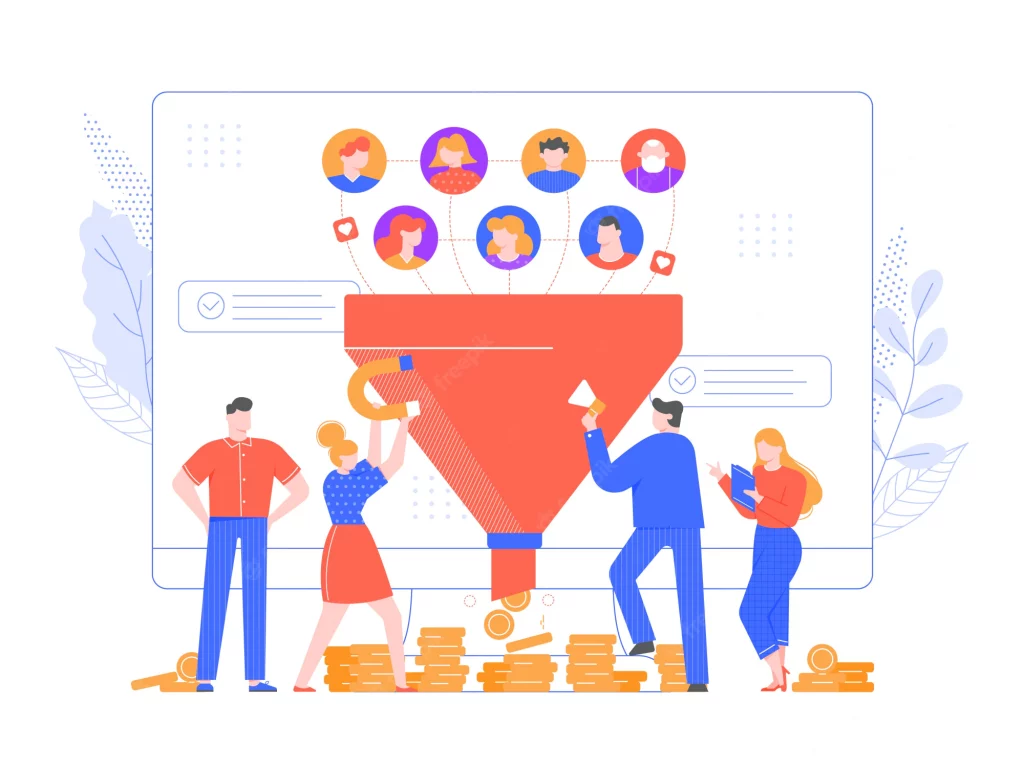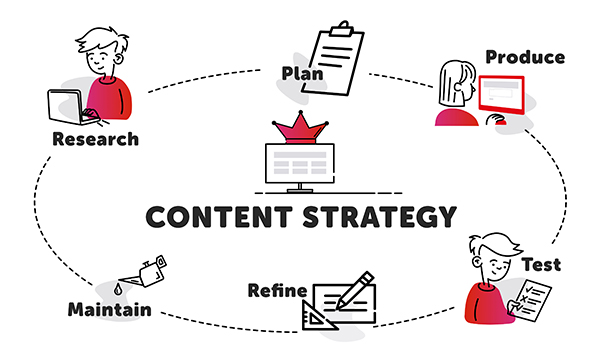Did you know that 87% of marketers develop content tailored to the various stages of the client journey?
When it comes to providing value to your audience and developing a more powerful content marketing plan for your company, having a solid understanding of which format works best at each step is a terrific tool to have.
In order to gain an understanding of how to map content to the stages of the funnel properly, we polled 350 marketers from all over the world and asked for their input.
The purpose of this survey was to build a thorough picture of how marketers utilize content along the funnel, including what channels are most effective, what metrics they use to assess results, and what channels perform best.
It is with great pleasure that we provide the study findings to you today.
I hope that our findings will help you identify weak spots in your content marketing funnel and provide you with fresh ideas for testing and improving them.
What Is a Content Marketing Funnel?
The content marketing funnel is the perfect instrument for your company to use in order to communicate that value.
The content marketing funnel is a campaign based on the client.
It employs tailored educational material at all points throughout the buyer’s journey to attract your ideal prospective customers and lead them toward completing a purchase.
It’s called a “funnel” because, if you visualize it in the shape of a “V,” your prospects enter at the broadest section or the top and progress along into a smaller route, where only consumers who are a good fit for your business go forward toward making a purchase.
Marketing professionals define the three primary stages of the marketing funnel as follows: the top of the funnel (TOFU) produces attention, the middle of the funnel (MOFU) generates leads, and the bottom of the funnel (BOFU) drives payments.
Because the user’s goals shift at each step, the content you produce will have to chase a different set of objectives, and the success of those objectives will be evaluated using a different set of metrics.
As a marketer, the most important question you must answer is, “What content will meet the informational needs of your potential consumers at a certain step?”
This is because your potential customers’ informational demands change at each stage. Continue reading to gain insight from the hundreds of different marketers we questioned.
Top Funnel Content Tips
Carry out some research on the keywords. When it comes to TOF content, SEO is more critical than ever because customers are not yet familiar with your brand.
Conduct thorough keyword research and ensure that all of your on-page SEO needs are met in order to increase your online exposure and improve your chances of being found.
Reduce the amount of time you spend promoting yourself. It is OK to incorporate calls-to-action (CTAs) to other resources and free tools in the content of your TOF, but the primary purpose of this endeavour is to educate and earn trust.
It’s possible to come off as insincere if you use your material to promote your company’s goods and services constantly.
Put some weight into the bog. Blogging is the most cost-effective solution here because of its low scalability requirements and low resource requirements.
For assistance in getting started, have a look at the blog post ideas and templates that we have provided.
FAQs
🧐 Why Is A Content Marketing Funnel Important?
It helps in systematically nurturing leads, increasing engagement, and ultimately converting prospects into customers by providing relevant information at each stage of their buyer's journey.
🎯 How Do I Create Content For The Consideration Stage?
Develop content that compares solutions, such as case studies, comparison guides, and detailed articles, to help prospects evaluate their options.
🔍 What Are The Key Stages Of A Content Marketing Funnel?
The key stages are Awareness (top of the funnel), Consideration (middle of the funnel), and Decision (bottom of the funnel).
📊 How Do I Measure The Success Of A Content Marketing Funnel?
Track metrics like conversion rates, lead quality, and customer acquisition costs to evaluate the effectiveness of each stage in the funnel.
🛠️ What Tools Can Help In Building A Content Marketing Funnel?
Tools like CRM systems, marketing automation platforms, and analytics software can streamline the process and provide valuable insights.
Also, Read:
- How Can ChatGPT Be Leveraged for Content Marketing? (My Tips Inside)
- How To Build Trust In Relationships With Content Marketing?
- Content Marketing Strategies That Will Grow Your Overall Traffic & Sales
- What Is Niche Marketing? Is It A Successful Strategy?
Conclusion: Content Marketing Funnel 2024
Now that you are familiar with the components of a content marketing funnel and how they function start thinking of all the many ways in which your company may use content to communicate with its consumers.
When everything is put together, each individual’s customer experience will seem distinct from the one before it.
Someone may find your website through a post on your blog, stay in touch with you via your newsletter, and finally make a purchase from you after using a free trial of one of your goods.
Another person may discover your company through a video, read one of your case studies, and ultimately choose to do business with you based on a recommendation from an existing client.


